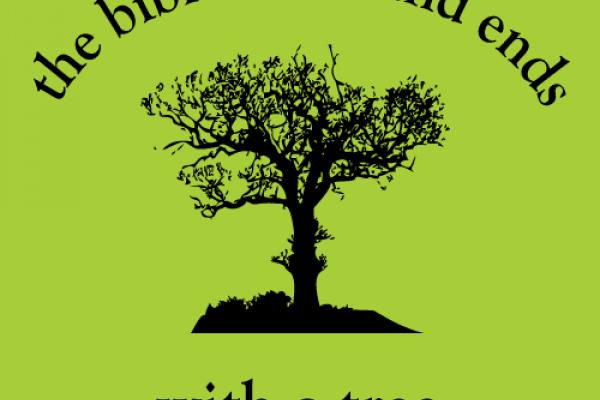SALT LAKE CITY — Whether churchgoers realize it or not, the trees in their churchyards have religious roots.
Those tall, thin-branched trees on the corner of this city's Episcopal Church Center of Utah, Purple Robe Black Locusts, were probably named after a biblical reference to John the Baptist eating locusts and honey.
Nearby, the crab apple tree just outside the Episcopal Cathedral Church of St. Mark produces a small, sour fruit used by 15th-century monks to treat diarrhea, dysentery, and gallstones.
And the flowers of a nearby dogwood tend to bloom around Easter.
“My hope,” said University of Utah biology professor Nalini Nadkarni, “is [worshippers] will realize that nature and trees are as much a part of their sacred ground and worthy of reverence as what goes on inside a cathedral or church.”
Nadkarni, who spends much of her time aloft in the forest canopies of Costa Rica and Washington, hopes to inspire conservation and appreciation of trees by sharing what she learns about them with the public. Part of the way she aims to do that is by giving talks at houses of worship about how trees and religion intersect.
“Obviously religion is a very strong force in the human race … and trees, it seems to me, are inherently spiritual,” said Nadkarni, herself the daughter of a Hindu father and a Jewish mother.
Trees connect the earth and the sky, Nadkarni said. They’re seen by many religions as manifestations of divine knowledge and are often symbolic links to truth.
Some Muslims, for example, believe the name of Allah, as written in Arabic, resembles the branches of a tree. Hindus often keep shrublike Tulsi trees in their homes, signifying the uniting of the divine world with the human one. Gothic cathedrals of Europe often feature towering columns curving into arches, much like trees extending their branches. Jews celebrate the holiday Tu B’Shvat, a new year for trees. And, in Buddhism, Buddha gained enlightenment while sitting under a Sacred Fig tree.
In the Old Testament, Nadkarni found 328 references to trees and forests. In the Book of Mormon, she found 103.
Nadkarni believes understanding trees better can lead to better understanding among faiths — and could help decrease deforestation by increasing conservation.
“I think what we’re seeing now, in a very hopeful way, is religion is trying to develop a sense of ethics, of reverence, of respect, of restraint, of redistribution and responsibility to our trees and other natural resources.”
Some have long seen faith and science as being at odds, but those who attended a recent lecture here by Nadkarni, which drew dozens from a number of religious traditions, said the two are a natural fit.
“I’ve often thought science supports God and God supports science,” said the Rev. Ray Waldon, dean of St. Mark’s Cathedral.
Susan Soleil, executive director of Utah Interfaith Power & Light, said Nadkarni has a knack for bringing science, such as climate change, to faith communities.
“Every single book of sacred text of all faiths has something about caring for God’s creation,” Soleil said. “People of faith have a moral obligation to care for this Earth.”
To that end, Nadkarni, since moving to Utah from Washington less than a year ago to direct the new Center for Science and Mathematics Education, has been working to educate faith communities.
Nadkarni and her students are working to produce booklets for missionaries about the natural histories of Utah and the countries in which they’ll be laboring. She hopes they can use them to better understand the places they visit and better connect with those they meet.
For a recent tour of local trees, she also handed out a booklet produced by her and one of her students mapping out and describing the trees in St. Mark’s churchyard and their religious significance. She plans to make more such booklets for other faith communities in Utah.
“It’s a way to extend the sense of reverence and of holiness beyond the bricks and mortar of the things we humans build,” Nadkarni said, “to those entities which are living and alive and which need our care.”
The booklet begins with a quote from Genesis 2:9.
“The Lord God made all kinds of trees grow out of the ground — trees that were pleasing to the eye and good for food.”
Lisa Schencker writes for the Salt Lake Tribune. Via RNS.
Got something to say about what you're reading? We value your feedback!
